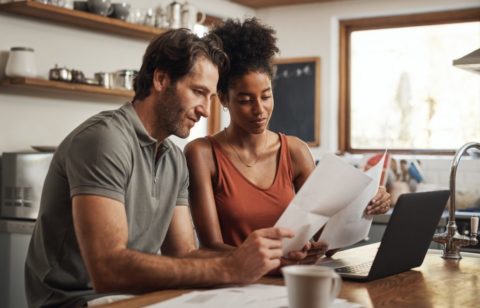The United States and Canada have very similar ways to address consolidating your debt. Of course, not every method is available to every consumer. Much of what you can do to consolidate your debt depends on your individual circumstances. However, if you are struggling with oppressive debt, and you live in Canada or the U.S., there are many options available to consider.
A recent report stated that Canadians owe approximately $1.67 for every dollar of their disposable income, a number that has been rising for some time. Like Americans, Canadians are accumulating debt at a pace not seen in a decade.
Canadians have eight well-known methods for consolidating their debt. You may recognize most of them, as they are the same or very similar to the methods available in the United States. Canada does have some differences, though.
Debt consolidation options available to Canadians:
- Debt consolidation loans
- Home equity line of credit or second mortgage
- Home refinance with cash out
- Line of credit
- Debt settlement
- Debt management
- Consumer Proposal
- A loan from a friend or family member
As you can see, many of these methods available to Canadians are similar to what is available to consumers in the United States.
Debt consolidation loans
When a consumer takes out a debt consolidation loan, generally, he or she will be working with a bank or other finance company to secure a loan that is usable to pay off all other debt. By rolling all of the debt into one large loan, consumers are often able to achieve a lower interest rate, good terms, and the benefit of making one single payment per month.
One of the advantages of a debt consolidation loan is that consumers are able to reduce the overall outlay of cash each month and increase available cash to take the strain off their budget. This may even allow them to begin saving money rather than living paycheck to paycheck.
Debt consolidation loans usually have a set term of two to five years. This gives the consumer the ability to pay off their debt in a reasonable period. Interest rates are generally favorable and the fees charged are usually low.
The disadvantages of a debt consolidation loan include rates that are generally higher than a mortgage-based loan and the need to provide collateral for the loan.
Mortgage-based loans like HELOCS and refinances
According to this article, consumers who own a home and have a good amount of equity, meaning they owe a good bit less on their home than the home is worth, may have the opportunity to take out a mortgage-based loan such as a home equity line of credit or a refinance with cash out to pay off their other debts.
Interest rates on mortgage-based loans are generally favorable, more so than debt consolidation loans, and the terms are usually longer. This can substantially reduce your payments and help you better manage your money each month. The disadvantage to this is that, even though your monthly payments are lower, you may end up paying more interest in the end.
In addition, many HELOCs and second mortgages have variable interest rates. This means the interest rate can go up and down based on an index, usually a certain percentage over the prime rate. While rates are very low now, and have been for quite some time, they will not stay this low forever. If rates go up in the future, you could end up paying a much higher rate and payment each month.
Something else to consider is the fees associated with mortgage-backed loans, which can sometimes be high. Additionally, banks will often have minimum loan amounts, making mortgage-backed loans not an option for some consumers.
Utilizing a line of credit
Prior to the Great Recession, personal lines of credit were popular and prevalent, and many consumers utilized them to consolidate their credit. Now, with banks imposing stricter lending practices, personal lines of credit are hard to come by. However, for those who have very good credit and a good relationship with a bank, this option for consolidating debt is still an option to consider.
A line of credit can come in the form of a secured or unsecured loan. Those with very good credit are likely to get better terms and a good interest rate. Many lines of credit only require the consumer to pay the interest each month while letting the principal balance carry forward indefinitely.
The basis for interest rates on personal lines of credit is usually a certain percentage over the going prime rate. That means that the interest rate will float as the prime rate rises and falls.
Some of the advantages of lines of credits are the traditionally low interest rates and fees. In addition, personal lines of credit offer you the flexibility to pay them off as fast or as slow as you want.
Debt management programs
Debt management programs can be a good and viable option for those consumers who don’t qualify for debt consolidation loans, mortgage-based loans, or personal lines of credit.
Debt management programs allow consumers to hire a third party, the debt management company, to help deal with creditors and make payments on their behalf. Essentially, the consumer makes one payment to the debt management company, which, in turn, pays each of the creditors. In Canada, the creditors must give approval for you to enter the program, but this is generally not a problem if the consumer is doing business with a reputable company.
Typically, debt management companies have programs that facilitate paying off a consumer’s debt within five years, although most consumers are able to pay off their debt within three years. Working with a nonprofit company in Canada will usually provide a consumer with lower fees and favorable terms.
In addition, consumers who utilize a debt management program in Canada can restore their credit rather quickly after completing a program with a nonprofit company.
Debt settlement
Debt settlement is the process of offering a creditor an amount less than the owed amount, and the creditor agreeing to accept this amount to settle the obligation on the account. In the United States, companies such as National Debt Relief work with customers to help settle their debts with creditors. In the past, in Canada, the primary way of accomplishing this was to do it on your own, by somehow acquiring enough money and then contacting your creditors and offering a settlement, usually 50% of the balance.
These days, a nonprofit credit counseling company generally handles debt settlement in Canada. Most agencies have a simple fee agreement that consists of a small percentage of the total amount of the settlement.
Upon reaching an agreement with the creditor and paying the balance in full within a prescribed period, no more interest or fees are due to the creditor. The obligation is satisfied, as long as the consumer has met the terms of the agreement. Depending on the situation, settlements can range from 20% to 80%.
Of course, the advantages of debt settlement include eliminating debt quickly and paying far less than you owe. In addition, consumers can have their credit rating restored very quickly, usually within two years, after completing a debt settlement program.
File a consumer proposal
One of the solutions Canadians have available is unique to the country: filing a consumer proposal. A consumer proposal consists of a legal process utilized by those in troublesome debt to resolve their debts without filing for bankruptcy. These consumers are those that are unable to qualify for traditional debt consolidation methods such as debt consolidation loans, mortgage-based loans, and personal loans.
A Bankruptcy Trustee usually handles the process. The Bankruptcy Trustee will prepare and distribute a proposal to a consumer’s creditors requesting a settlement that is less than the owed amount.
In order for the proposal to go into effect, at least half of the consumer’s creditors must agree. If the proposal is acceptable to the majority of the creditors, then the consumer will have a defined period to repay the debt, usually within five years. The consumer must adhere to the terms of the proposal. If unable to meet the obligations, then filing for bankruptcy may be necessary.
The advantages of a successful consumer proposal are that consumers pay no interest upon acceptance of an agreement; they will repay far less than what they owe; and they will be able to avoid bankruptcy.
While there are advantages to a consumer proposal, there are also disadvantages. A consumer proposal begins a legal process that must conclude. Once a consumer begins the process, there is no getting out of it. In addition, it could affect the consumer’s credit score for quite some time, as programs will involve payback times of approximately five years, with negative credit consequences for a few years thereafter.
Take a loan from family or friends
Some consumers are lucky enough to have a family member or friend who is able to help with their debt problem. If this is the case, then resolving a debt problem can be a much easier process. However, keep in mind that borrowing money from family or friends can create a strain on those relationships. If a consumer does decide to borrow from someone close, it is imperative to ensure he or she can meet the obligation to pay it back.
If you do ask to borrow from a friend or family member, and that person turns you down, try to be understanding. This is a very difficult situation both personally and financially, and some people just don’t want to get into the potential problems.
Get free advice
If you are struggling with a debt problem and are not sure which way to turn, take advantage of the resources you have to get some good advice. If you have a good relationship with a bank or credit union, make an appointment to talk about what options may be available to you. Sometimes, by having you fill out a simple loan application, a lender can get a clear picture of your financial situation and be able to advise you on what options may be best for you.
In addition, sitting down with a genuine nonprofit organization can help you gain valuable insight into your situation and the options that you have.
In either case, the advice is free and you are under no obligation to do anything.
Know your options
Regardless of where you live, whether in the United States or Canada, it is important to know what is available to you to help mitigate your debt problem. While navigating the financial terms and product offerings can be a daunting task for any consumer, by understanding your debt options, you can ensure that you make the best possible decision. Don’t wait too long in exploring your options. Many times, consumers limit their options by not moving quickly enough.
Contact your bank, credit union, or other financial resource today to discover the best path to getting out of debt.





